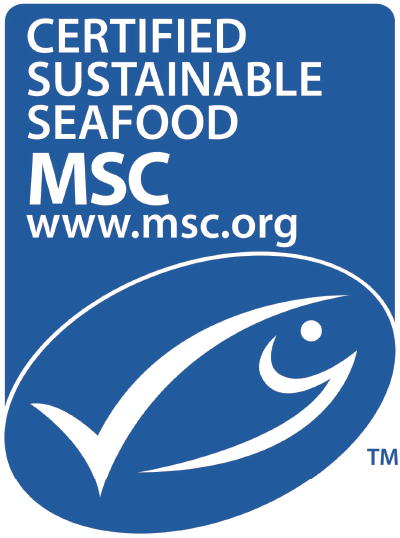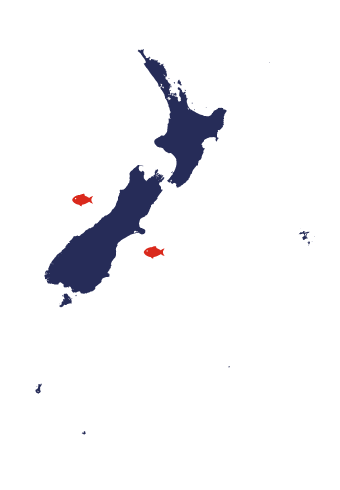Hake
Merluccius australis
A moist, white flesh fish with few bones and a delicate texture.
The Hake caught in New Zealand are native to our waters, but similar species are also found in temperate and cold waters in the northern and southern hemispheres.
New Zealand Hake are mainly harvested by trawl in the South Island. The two main Hake fisheries in New Zealand are off the west coast of the South Island and off the Chatham Rise.
Traditionally Hake was a bycatch in the much larger Hoki fishery, but in recent year its has become an important target specie. The Hake fishery overlaps with the Hoki and Ling fishery.
The Marine Stewardship Council eco-label assures you that our Hake reflects sustainable fishing at its finest. It means that our fish stocks are healthy, we're protecting the eco-system and there is ongoing effective management of Hake Fisheries.

Key Information
Family
Hake belong to the Merlucciidae family (hakes) and is restricted to NZ, but there are more than a dozen Hake species.
Physical attributes
Hake have a dark silver-grey body above shading to white on the belly. The body is slender and round with a square tail and wide head, large eyes and large mouth with teeth turned inwards.
The flesh is soft and delicate with few bones.
Sustainability
Hake has been certified as sustainable by the Marine Stewardship Council, the global gold standard for sustainability since September 2014.
Hake is also managed by the Ministry for Primary Industries using the New Zealand Quota Management System (QMS). Regular stocks assessment are conducted to estimate fishery stock size and numbers. Scientific studies are also used. From these, scientists can estimate future stock sizes and catch limits.
Geographical location
New Zealand Hake are mainly harvested by trawl in the South Island. The two main Hake fisheries in New Zealand are off the west coast of the South Island and off the Chatham Rise at depths between 200 and 800 metres. They can also be found in sub-antarctic waters.
Market Names
- New Zealand: Hake, Whiting
- Australia: Southern Hake
- Canada: Merlu austral
- Commonwealth of Independent States: Merluza, Khek
- The Netherlands: Heek, Stockfisch
- France: Merlu, Merlu austral
- Germany: Seehecht
- Greece: Bakaliaros
- Italy: Nasello, Merluzzo
- Japan: Heiku, Meruruusa, Meru
- Korea: Min daeg
- Spain: Merluza (large), Pescadilla (small)
Locations Caught

Profile
Average weight
2-9 kg up to 14kg
Average length
70-100 cm
TACC i
7,783 tonne
Talley's catch
500-1000 tonne
Nutritional information
Average quantity per 100g
Energy
336 kJ
Protein
16.4 g
Fat, total
1.6 g
Carbohydrate
0.2 g
Seasonal availability
Flavour and cooking
Hake has a moist, white flesh with few bones and a soft, delicate texture. It is suitable for most cooking methods including baked, poached, grilled and steamed. It's also a great option to marinate or use in curries, soups or chowders.
Want to know more?
If you have any enquiries please feel free to contact our friendly sales team.
© Talley's 2025 • Web design and development by Plato
